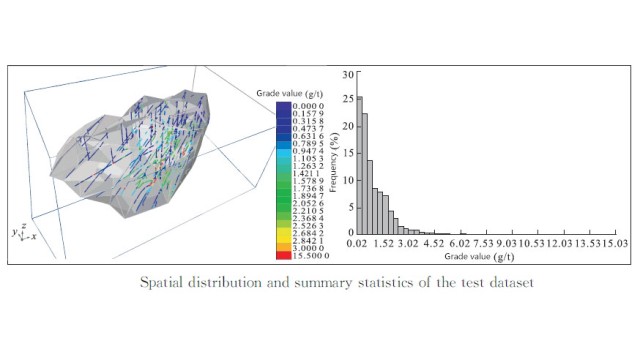Table of Contents
- Introduction to Handheld XRF Analyzers in Mining
- Key Features of Handheld XRF Analyzers
- Ore Grade Control and Mining Applications
- Real-Time Detection and Online Analysis
- Advantages of Handheld XRF Analyzers in Hardrock Mining
- User-Friendly Design and Operational Safety
- Future Trends and Innovations in Handheld Mining Analyzers
Introduction to Handheld XRF Analyzers in Mining
In the dynamic and fast-paced world of mining, efficient decision-making is paramount for success. Enter the handheld XRF analyzer, a transformative tool that revolutionizes the industry by providing immediate, lab-quality analysis on-site. This comprehensive guide delves into how these powerful devices are enhancing mining operations, offering insights into their features, applications, and the numerous benefits they provide for ore grade control and beyond.
Key Features of Handheld XRF Analyzers
Handheld XRF analyzers are renowned for their superior analytical performance, fast analysis capabilities, and the wide range of elements they can detect. These features make them indispensable tools in various industries, including mining, exploration, and geoscience.
Excellent Analytical Performance: Handheld XRF analyzers utilize high-performance micro X-ray tubes and intelligent multi-position filters. These components are specifically optimized for key elements, ensuring accurate and precise measurements. The use of advanced detector technology, such as Silicon Drift Detectors (SDD), offers count rates and resolution that are far superior to older SiPIN detector technology. This improvement in detector technology significantly enhances the analytical performance of the handheld devices, allowing for more detailed and reliable elemental analysis.
Fast Analysis Capabilities: One of the standout features of handheld XRF analyzers is their speed. With the ability to perform one-click measurements, users can obtain stable measurement values in just a few seconds. This rapid analysis is crucial in time-sensitive environments, such as mining operations where quick decisions can lead to more efficient resource utilization. The fast analysis also reduces downtime, as samples can be tested on-site without the need for lengthy laboratory procedures.
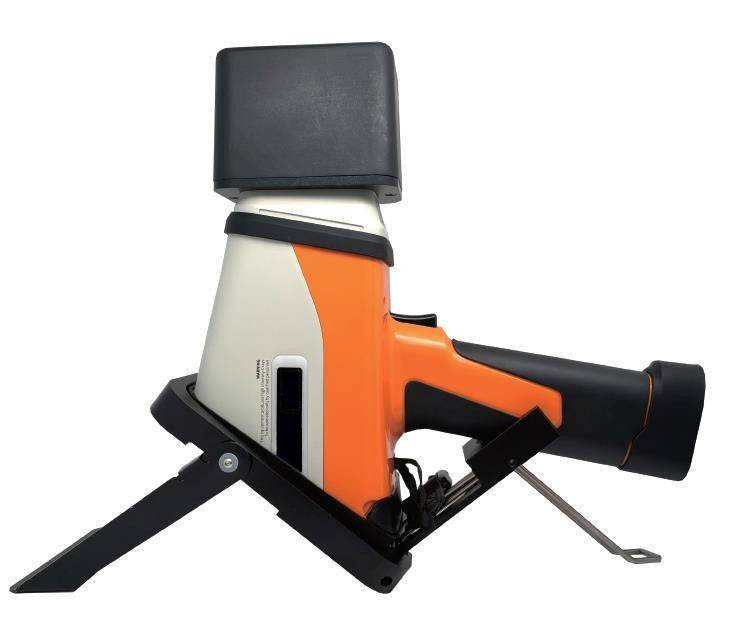
Wide Range of Elements Detectable: Handheld XRF analyzers can simultaneously analyze up to 43 elements, making them versatile tools for a broad spectrum of applications. This capability is particularly beneficial in mining and exploration, where the presence of rare earth elements and key oxides is critical for economic feasibility. The wide range of detectable elements ensures that a comprehensive analysis can be performed, aiding in the identification of strategic areas within the mining grid and facilitating on-site determinations.
In summary, handheld XRF analyzers offer a combination of excellent analytical performance, rapid analysis capabilities, and a wide range of detectable elements. These features make them essential tools for industries that require immediate, on-site elemental analysis, enhancing efficiency and productivity in various sectors.
Ore Grade Control and Mining Applications
Handheld XRF analyzers play a crucial role in ore grade control and various mining applications, significantly enhancing the efficiency and accuracy of ore analysis. These devices are designed to provide immediate, lab-quality results on-site with minimal sample preparation, making them indispensable tools in the mining industry.
Improving Analysis Efficiency
The use of handheld XRF analyzers in mining operations allows for real-time analysis of ore samples. This capability is particularly beneficial in hardrock mining, where the analyzers can quickly and accurately assess ore samples from both open pits and underground mines. The speed and precision of these devices enable miners to make informed decisions on the spot, such as determining the feasibility of lower grade resources or identifying localized high-grade enrichments. This immediate feedback helps in clearly defining the boundaries between ore and waste, thereby optimizing the extraction process and reducing unnecessary disposal.
Ensuring Consistency in Ore Quality
Consistency in ore quality is vital for maintaining the efficiency and profitability of mining operations. Handheld XRF analyzers contribute to this by providing reliable data that can be used to oversee processes and ensure quality. For instance, these analyzers can appraise rock cuts and guide blasting, excavation, and ore handling operations, ensuring that the ore extracted meets the required standards. Additionally, they enhance the management of run-of-mine stockpiles, which is crucial for consistent blending and maintaining high-quality mill feed.
Cost Savings and Efficiency Gains
The integration of handheld XRF analyzers into mining workflows leads to substantial cost savings and efficiency gains. By enabling rapid analysis on the conveyor belt, these devices help in sorting ore and controlling the ore grade more effectively. This not only saves on raw material costs but also improves production efficiency, facilitating the rapid recovery of equipment input costs. Furthermore, the ability to perform online real-time detection of solid film thickness and composition analysis of liquids or fluids extends the utility of these analyzers beyond just ore analysis, making them versatile tools for various mining applications.
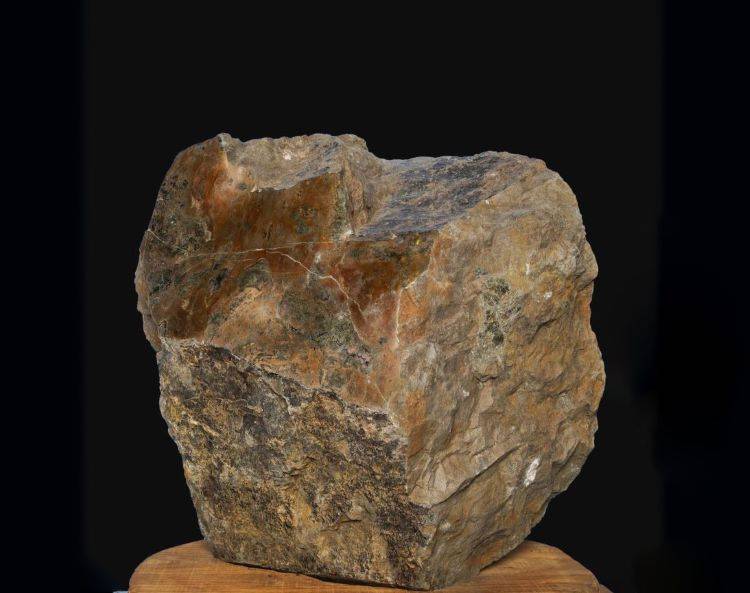
Advanced Features for Enhanced Performance
Handheld XRF analyzers are equipped with advanced features that enhance their analytical performance. These include high-performance micro X-ray tubes and intelligent multi-position filters, which are optimized for key elements. The use of an SDD detector offers superior count rates and resolution compared to traditional SiPIN detector technology, resulting in lower detection limits for all elements analyzed. This technological advancement ensures that the analyzers can handle a wide range of elements simultaneously with one-click measurement, providing stable and accurate results without the need for complicated sample preparation.
In conclusion, handheld XRF analyzers are transformative tools in the mining industry, offering significant benefits in terms of ore grade control, operational efficiency, and cost savings. Their ability to provide immediate, accurate analysis in the field makes them essential for modern mining operations looking to enhance their productivity and sustainability.
Real-Time Detection and Online Analysis
Handheld XRF analyzers are revolutionizing the field of real-time detection and online analysis, particularly in applications involving solid film thickness and liquid composition analysis. These devices offer unparalleled convenience and accuracy, making them essential tools across various industries.
Solid Film Thickness Analysis
In the manufacturing sector, the thickness of coatings on various materials is crucial for ensuring product quality and performance. Handheld XRF analyzers like the XRF-980 are designed to measure coating thickness with high precision. These devices utilize high-resolution Si-PIN or SDD silicon drift detectors to achieve excellent measurement accuracy and stability. They are particularly useful in quality control processes where the thickness of coatings must be strictly regulated to avoid over- or under-coating, which can lead to increased costs or compromised product integrity.
The XRF 980, for instance, offers fast and easy operation with a second-level detection speed for coating thickness and composition analysis. Its compact size and portability make it ideal for on-site inspections, and its large, high-definition touch display simplifies user interaction, requiring minimal training. This analyzer also features intelligent control, allowing for one-button measurements and quick analysis of coating thickness and composition, even when the coating composition is unknown.
Liquid Composition Analysis
Beyond solid film analysis, handheld XRF analyzers are also capable of analyzing the composition of liquids in real-time. This capability is particularly valuable in industries such as chemical processing, where the precise composition of liquids is critical for product consistency and safety. These analyzers can quickly assess the elemental composition of liquids, providing immediate feedback that can be used to adjust processes on the fly, ensuring optimal product quality and reducing waste.
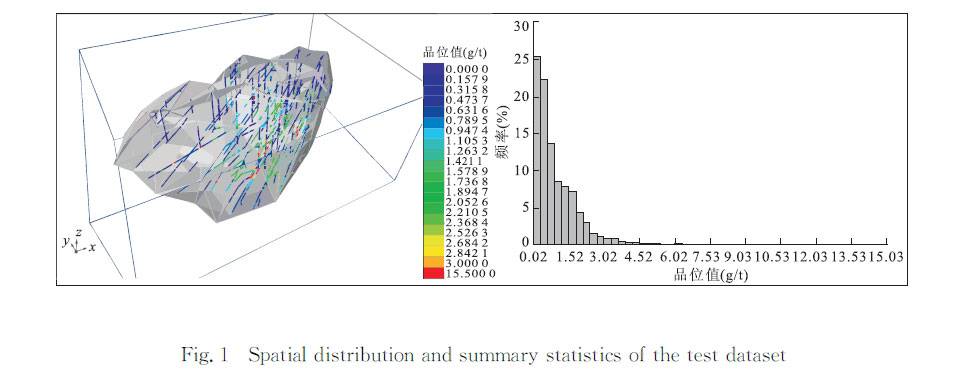
Applications in Mining and Exploration
In the mining industry, handheld XRF analyzers like the XRF60M are invaluable for on-site analysis of ore samples. These devices can analyze ore samples with minimal sample preparation, significantly reducing the time required for lab assay from days to minutes. The XRF60M, equipped with the capability to analyze light elements, is particularly useful for understanding sample mineralogy and analyzing minerals such as bauxite and limestone. During exploration, its mobility and light weight make it an excellent tool for fast screening of vast areas.
Conclusion
Handheld XRF analyzers are transforming real-time detection and online analysis by providing fast, accurate, and portable solutions for a wide range of applications. Whether it's measuring the thickness of coatings in manufacturing or analyzing the composition of liquids in chemical processing, these devices offer a level of convenience and precision that was previously unattainable. As technology continues to advance, the capabilities of handheld XRF analyzers are only expected to grow, further enhancing their utility across various industries.
Advantages of Handheld XRF Analyzers in Hardrock Mining
Handheld XRF (X-ray Fluorescence) analyzers play a crucial role in hardrock mining, offering significant advantages in grade control, resource evaluation, and operational guidance. These devices provide immediate, on-site elemental analysis, which is essential for making rapid and informed decisions in the mining process.
Grade Control
One of the primary benefits of using handheld XRF analyzers in hardrock mining is their ability to facilitate real-time grade control. By quickly analyzing ore samples, these devices help in maintaining the quality of the ore extracted. They enable miners to distinguish between different grades of ore, from high-grade to waste, which is crucial for economic mining operations. This capability allows for the optimization of ore extraction, ensuring that only valuable materials are processed, thereby reducing costs associated with unnecessary processing of low-grade or waste materials.
Resource Evaluation
Handheld XRF analyzers are instrumental in evaluating the feasibility of mining resources. They can analyze a wide range of elements, including both major and trace elements, which is essential for comprehensive resource evaluation. This analysis helps in identifying localized high-grade enrichments within the ore body, which can significantly impact the profitability of the mining operation. By providing detailed elemental composition data, these analyzers assist in making strategic decisions about where to focus mining efforts, thereby enhancing the overall efficiency and effectiveness of the mining process.

Operational Guidance
In hardrock mining, operational decisions such as where to drill, blast, and excavate are critical. Handheld XRF analyzers provide the necessary data to guide these operations. They help in appraising rock cuts and determining the best approach for excavation and ore handling. By providing immediate feedback on the elemental composition of the rock, these devices enable miners to adjust their strategies on the fly, ensuring that operations are as efficient and productive as possible. This real-time guidance not only improves the safety and efficiency of mining operations but also reduces the environmental impact by minimizing unnecessary excavation and processing.
Conclusion
Handheld XRF analyzers are a vital tool in modern hardrock mining operations. Their ability to provide immediate, accurate elemental analysis on-site significantly enhances grade control, resource evaluation, and operational guidance. By leveraging these devices, mining companies can improve their decision-making processes, increase productivity, and reduce operational costs, making them an indispensable part of the mining industry's technological toolkit.
User-Friendly Design and Operational Safety
Handheld XRF analyzers are revolutionizing the mining industry with their ergonomic and compact design, ensuring safety and ease of use in various mining environments. These devices are not only designed for efficiency but also for user comfort and safety, making them indispensable tools in modern mining operations.
The ergonomic design of handheld XRF analyzers is a critical feature that enhances user comfort and reduces fatigue during prolonged use. These devices are crafted to fit comfortably in the hand, with intuitive controls that allow operators to perform complex analyses with minimal effort. The compact size of these analyzers also makes them highly portable, enabling easy movement and use in diverse mining settings, from open pits to underground mines.
Safety features are paramount in the design of these analyzers. They are equipped with protective mechanisms to shield users from harmful radiation, ensuring compliance with health and safety regulations. Additionally, the analyzers are built to withstand harsh mining conditions, with rugged exteriors that resist damage from dust, moisture, and extreme temperatures.
The operational ease of handheld XRF analyzers is another significant advantage. They offer real-time analysis capabilities, allowing miners to quickly evaluate ore samples and make informed decisions on the spot. This immediate feedback is crucial for grade control, helping to distinguish between grade, sub-grade, and waste materials effectively. By clearly defining the boundaries between ore and waste, these analyzers help prevent unnecessary disposal and optimize resource utilization.
Furthermore, the integration of advanced software in these devices enhances their functionality. The AXRSPEK PC software, for instance, allows for remote operation and easy data management, making it simpler to view, print, and analyze data directly from a computer. This software also supports customization, enabling users to tailor the analyzer's settings to their specific mining needs.
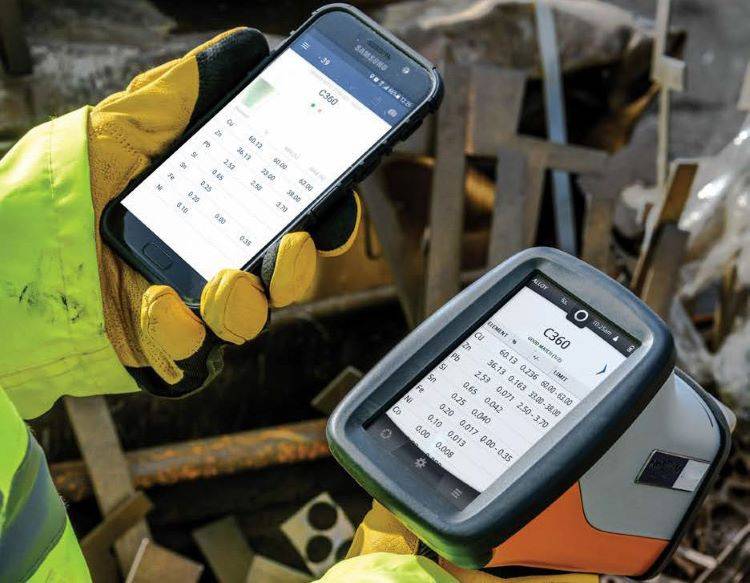
In summary, the user-friendly design and operational safety features of handheld XRF analyzers make them essential tools in the mining industry. Their ergonomic design, safety mechanisms, and advanced software capabilities ensure that miners can perform their tasks efficiently and safely, contributing to improved productivity and sustainability in mining operations.
Future Trends and Innovations in Handheld Mining Analyzers
The mining industry is on the cusp of significant advancements in handheld XRF technology, which are set to revolutionize the way minerals are analyzed and extracted. These innovations are not only enhancing the detection limits but also increasing the speed of analysis and integrating seamlessly with other mining technologies.
Enhanced Detection Limits
Handheld XRF analyzers are evolving to offer even more sensitive detection capabilities. With the integration of advanced detectors featuring graphene windows, these devices can now measure concentrations at levels comparable to or lower than the typical naturally occurring values in the Earth's crust. This heightened sensitivity allows for the detection of subtle geochemical irregularities, which is crucial for identifying valuable resources and preventing unnecessary disposal of potentially useful materials.
Accelerated Analysis Speed
Speed is a critical factor in mining operations, and handheld XRF analyzers are being designed to provide rapid qualitative screenings directly in the field. This swiftness not only demarcates ore and waste boundaries more efficiently but also minimizes the unpredictability of excavation. The rapid assays facilitated by these analyzers optimize drill locations, guide extraction processes, and determine ore grade swiftly, thereby reducing turnaround times and cutting down on laboratory expenses.
Integration with Other Mining Technologies
The future of handheld XRF technology lies in its ability to integrate with other mining technologies. This integration can lead to a more streamlined mining process, from exploration to extraction. For instance, the data collected by handheld XRF analyzers can be used in conjunction with GPS and GIS technologies to map ore deposits more accurately. This synergy not only enhances the efficiency of mining operations but also improves the overall sustainability by reducing waste and optimizing resource use.
Intelligent Software and Connectivity
Advancements in software are also playing a crucial role in the evolution of handheld XRF analyzers. User-friendly software solutions with customizable data fields and user profiles are being developed to tailor workflow solutions to specific business needs. Moreover, the ability to remotely operate the analyzer through WiFi and USB connections, and to view and print data and reports easily, adds a layer of convenience and efficiency to the mining process.
Sustainable and Cost-Effective Mining
The innovations in handheld XRF technology are not just about enhancing performance but also about promoting sustainability and cost-effectiveness in mining. By enabling prompt geochemical analysis and reducing the need for external lab tests, these analyzers help in saving not only time but also resources. This efficiency not only lowers the environmental impact of mining but also ensures a better return on investment for mining companies.
In conclusion, the future trends in handheld mining analyzers are geared towards making mining operations more efficient, sustainable, and cost-effective. With enhanced detection limits, accelerated analysis speed, and seamless integration with other technologies, these analyzers are set to play a pivotal role in the future of mining exploration and extraction.
Related Products
- XRD Sample Holder X-ray Diffractometer Powder Slide
- Lab Electrochemical Workstation Potentiostat for Laboratory Use
